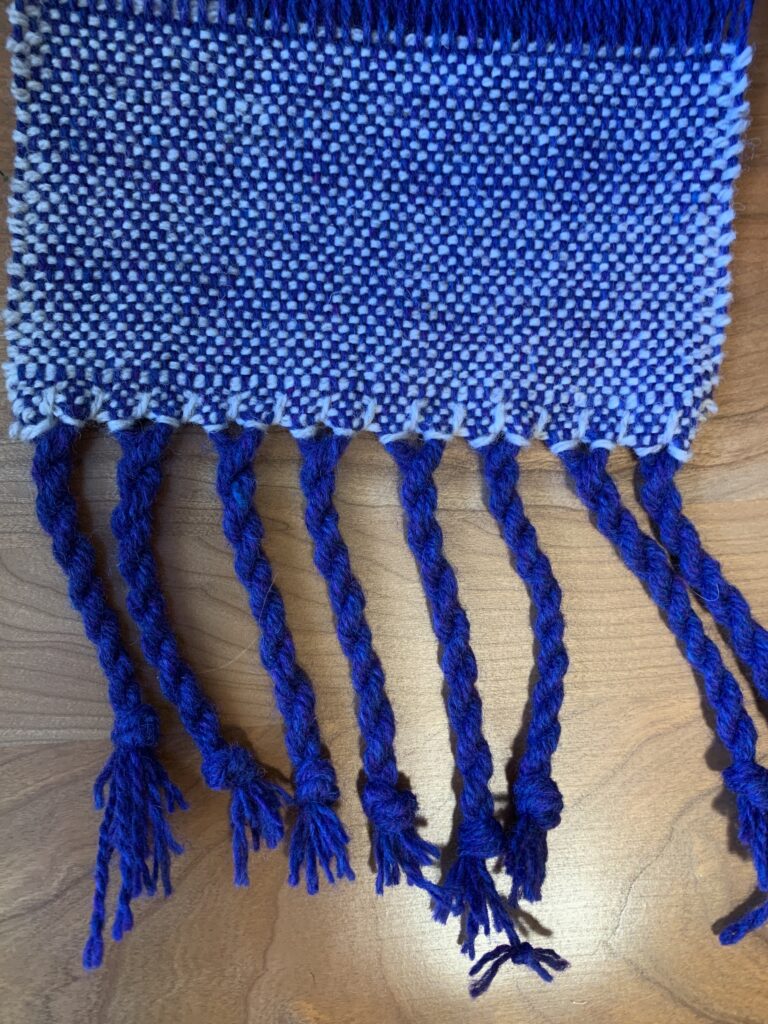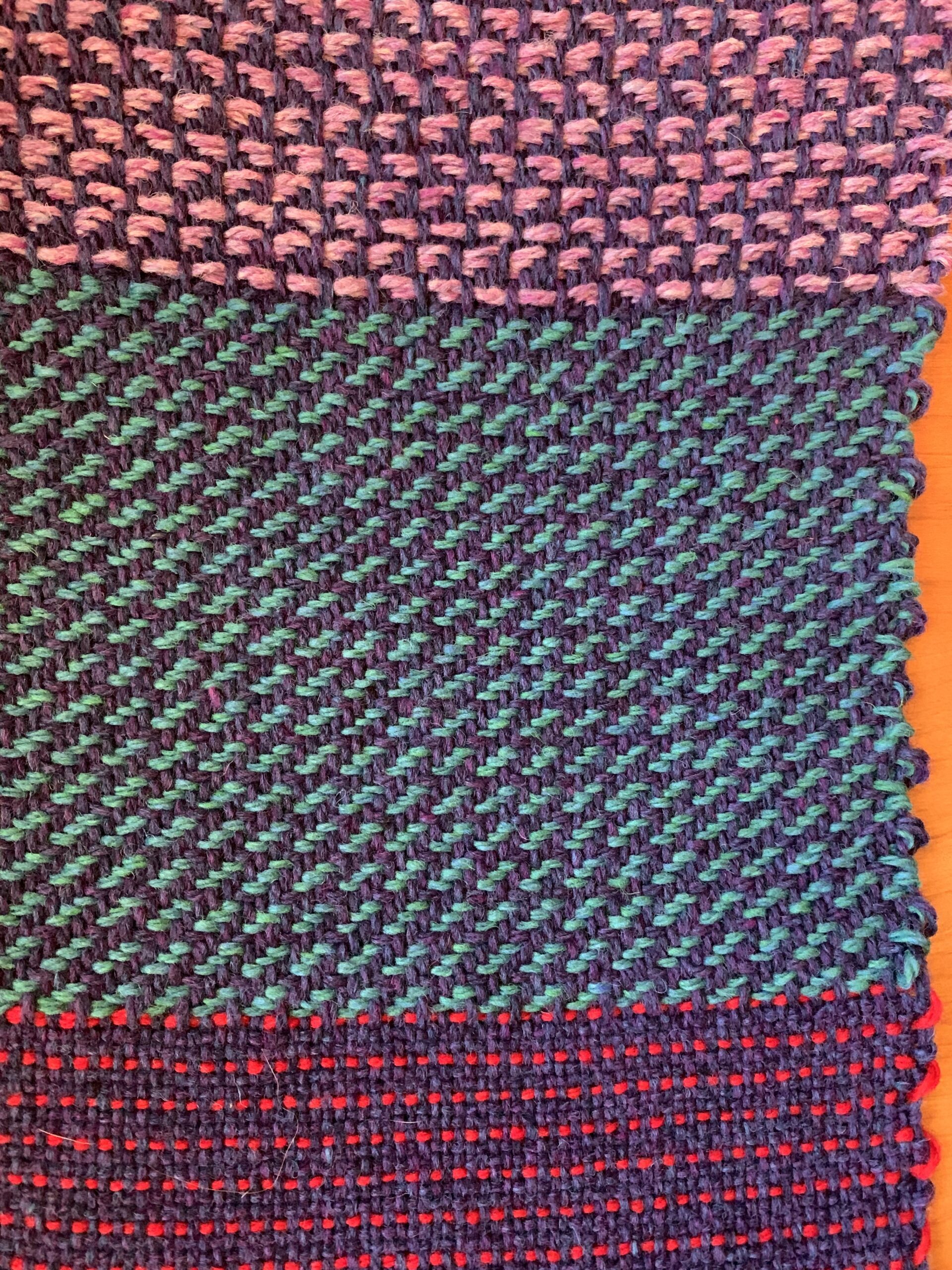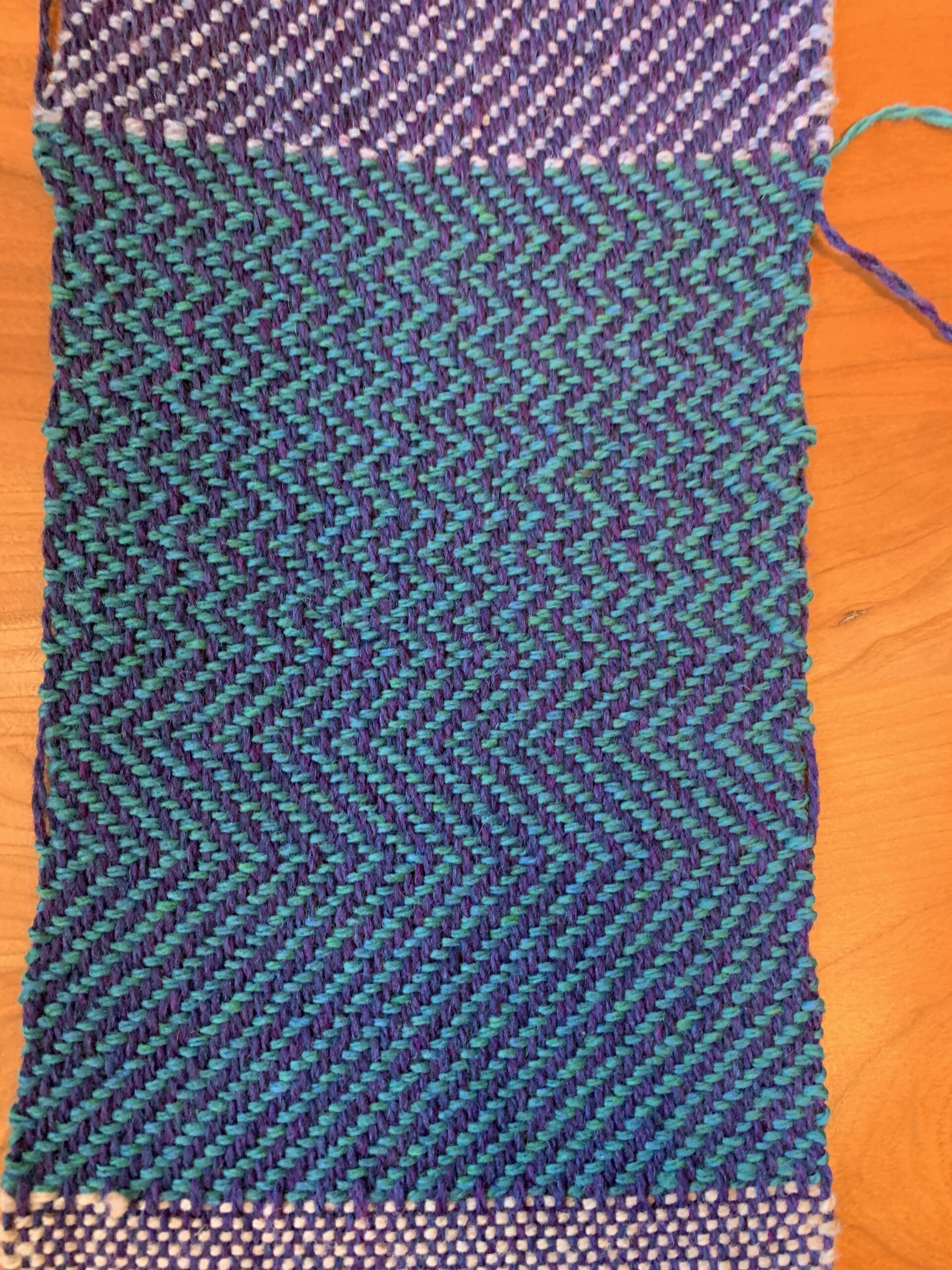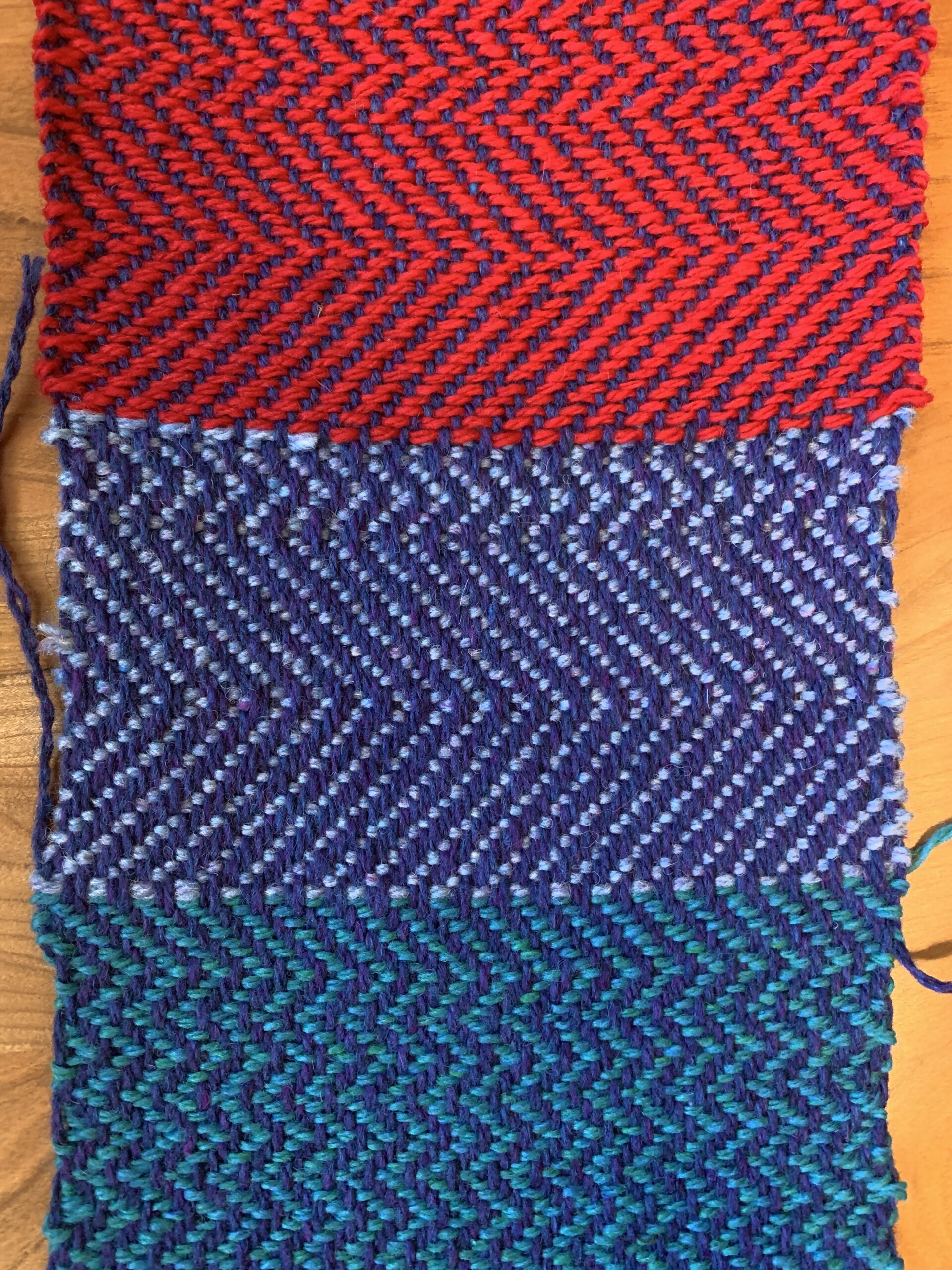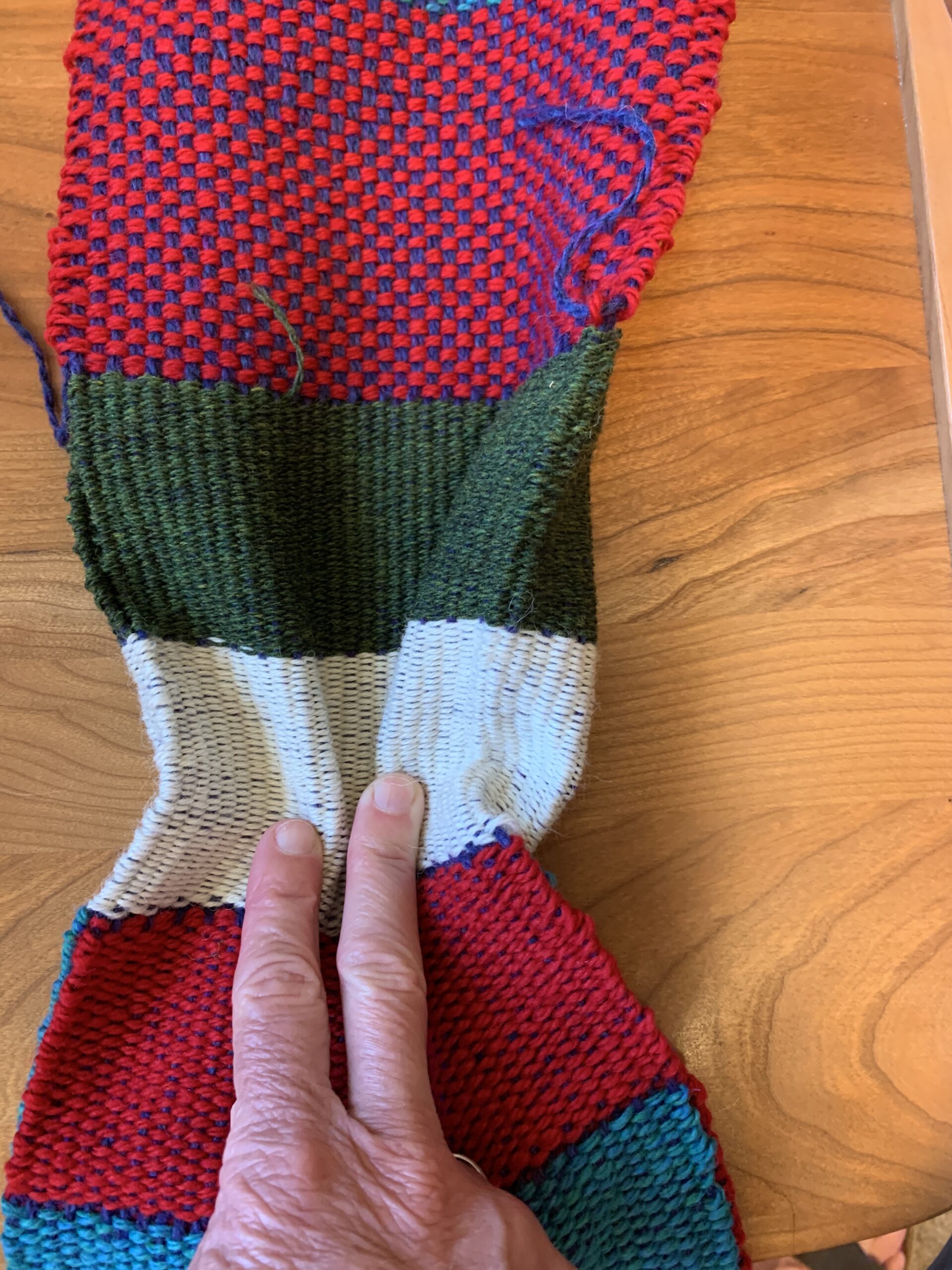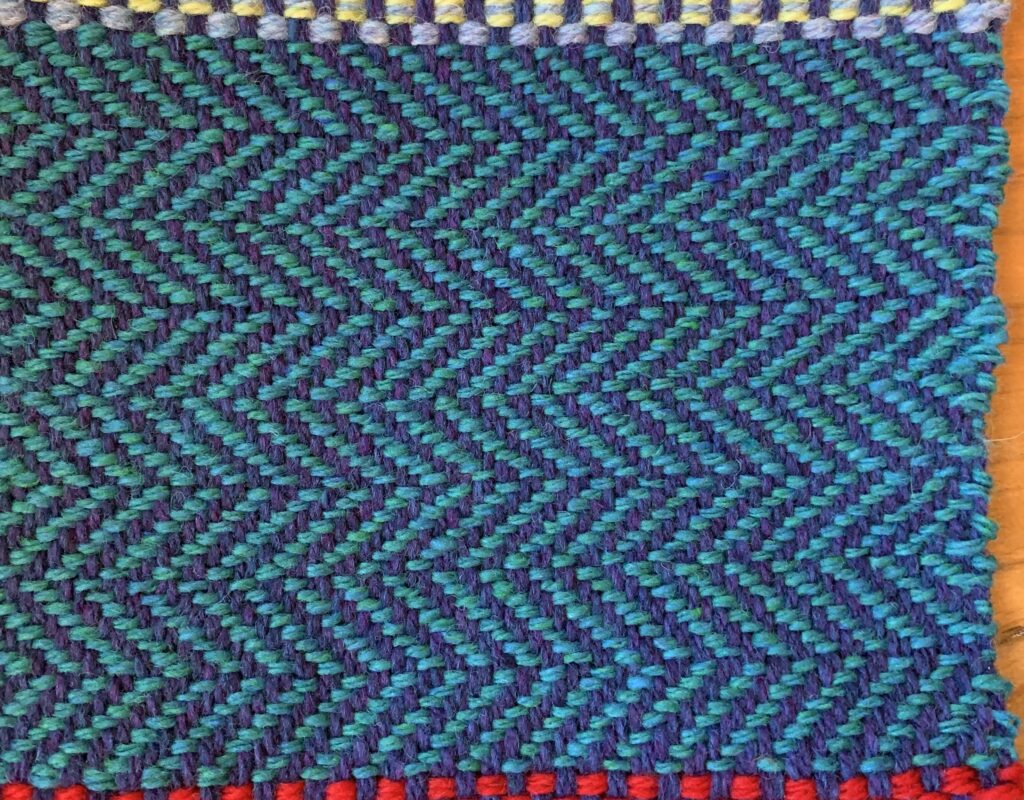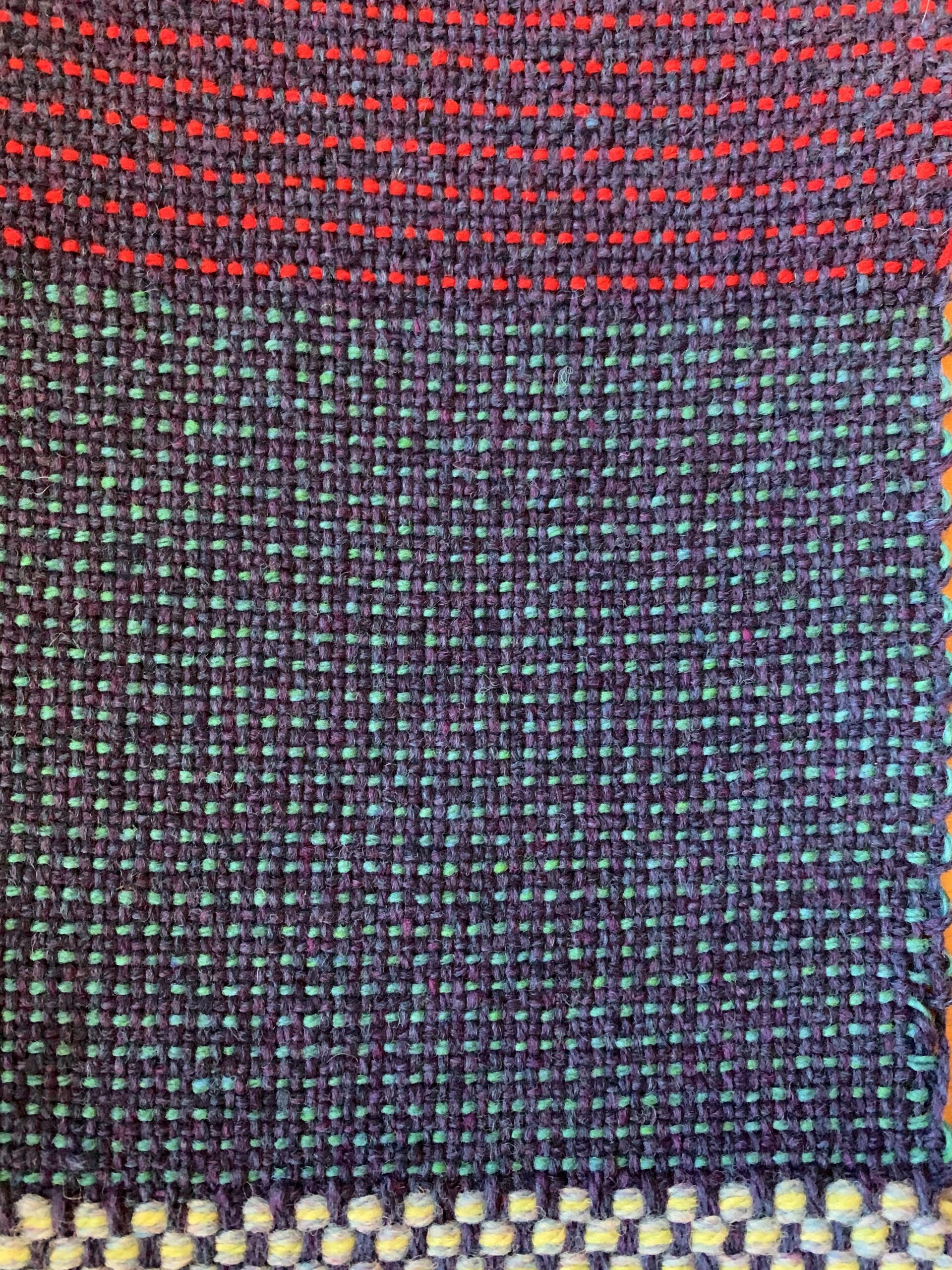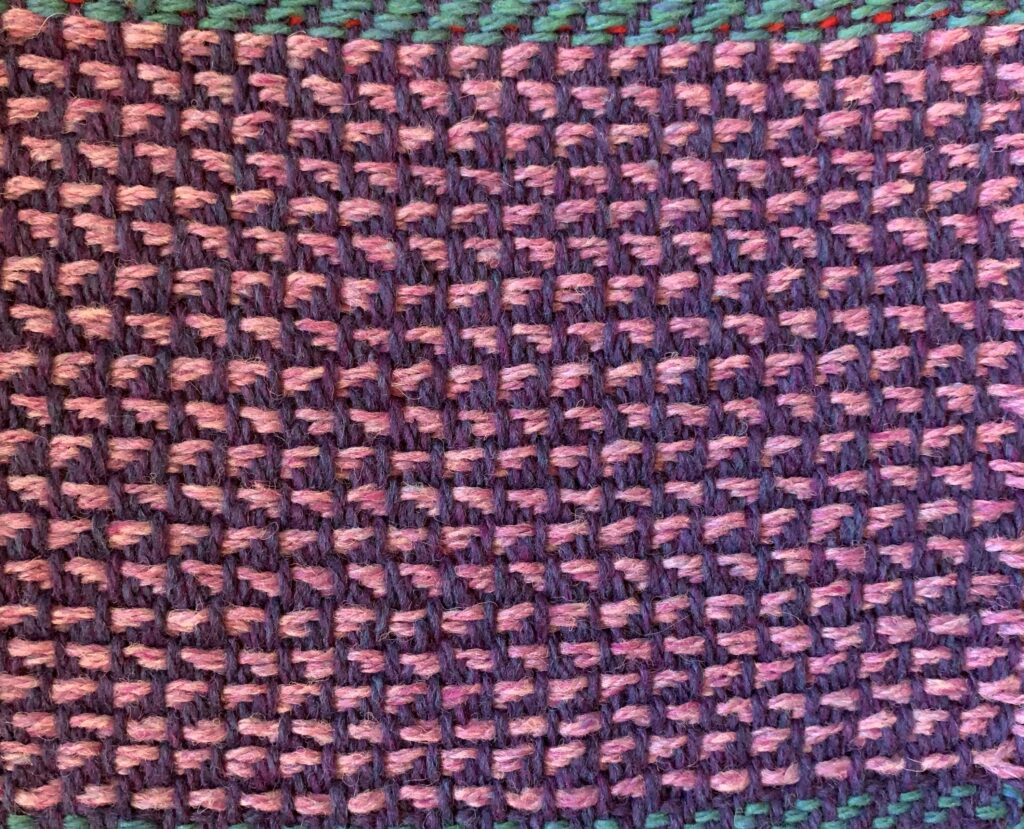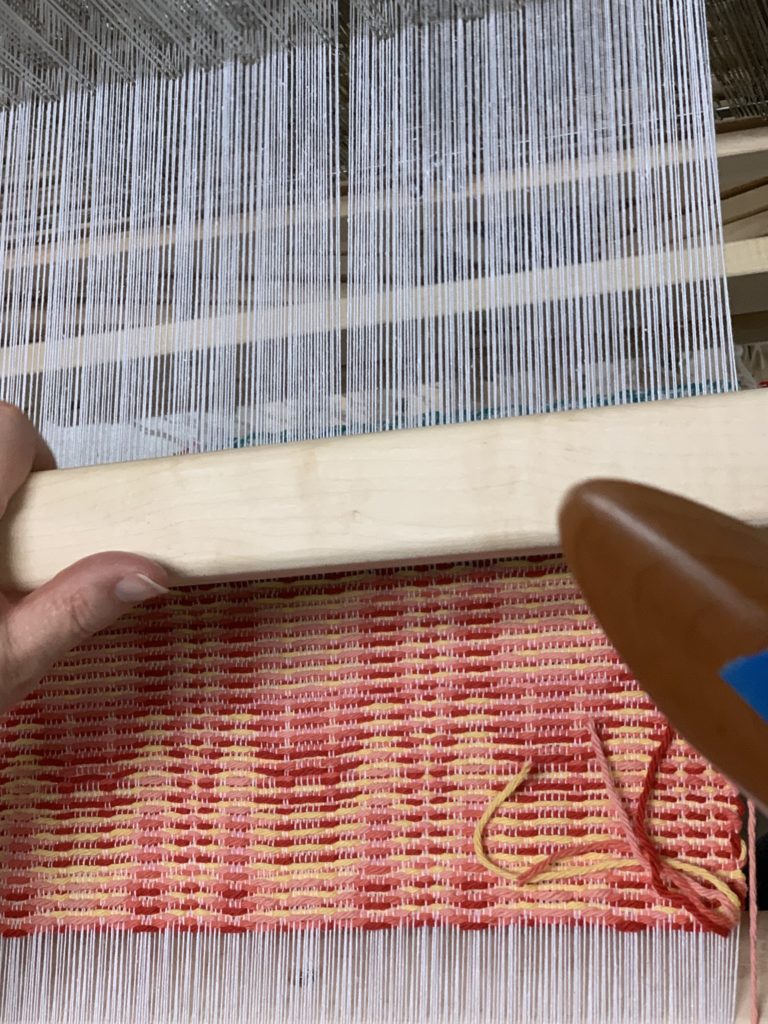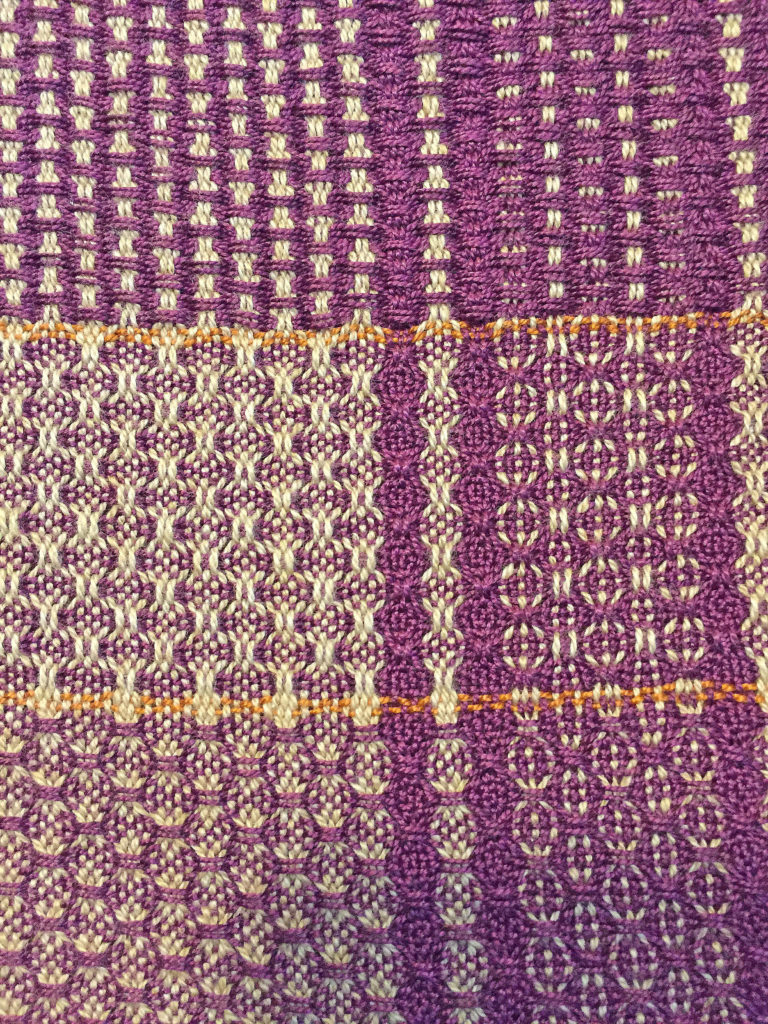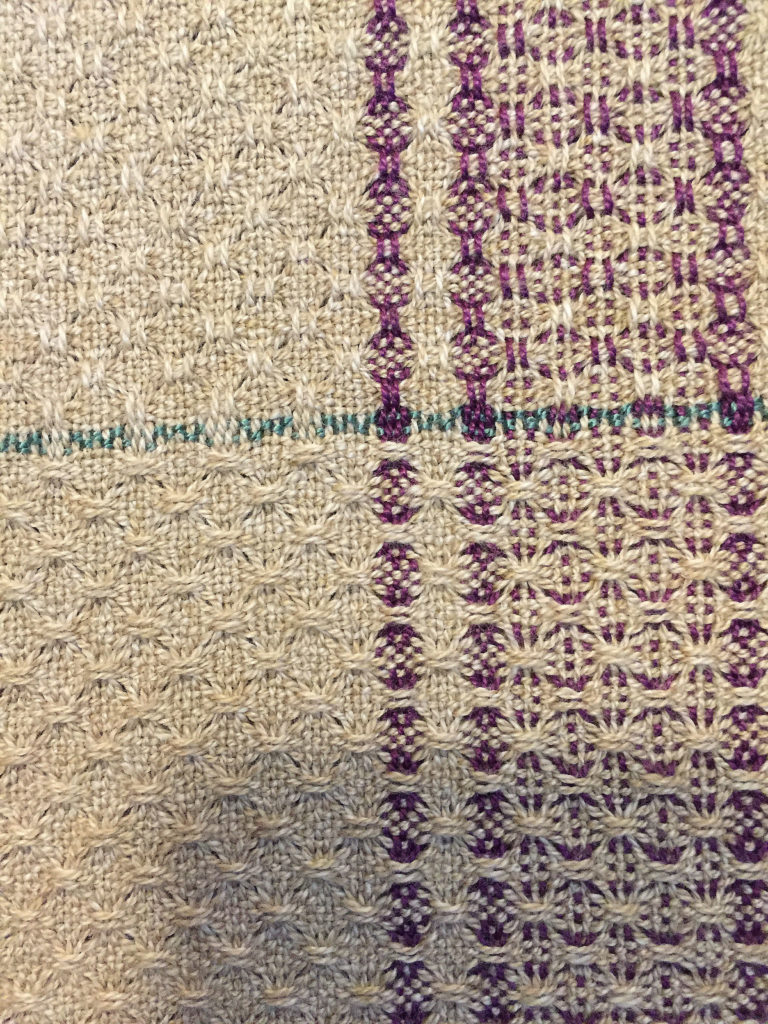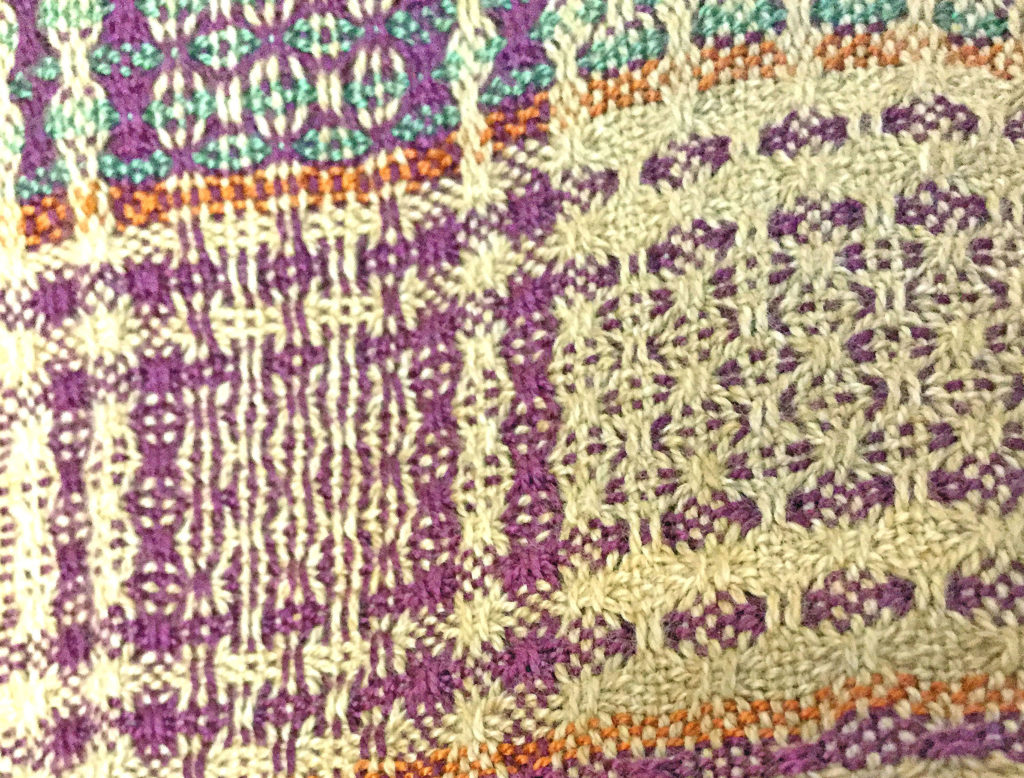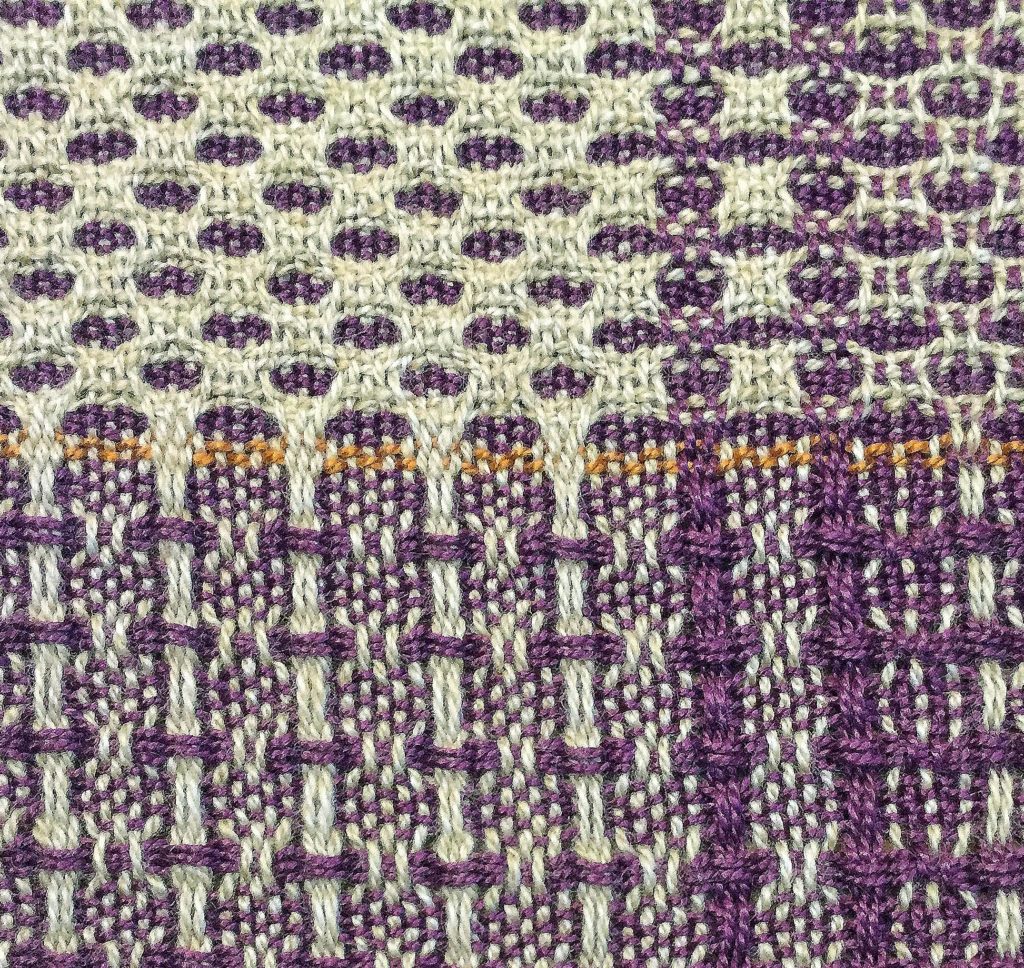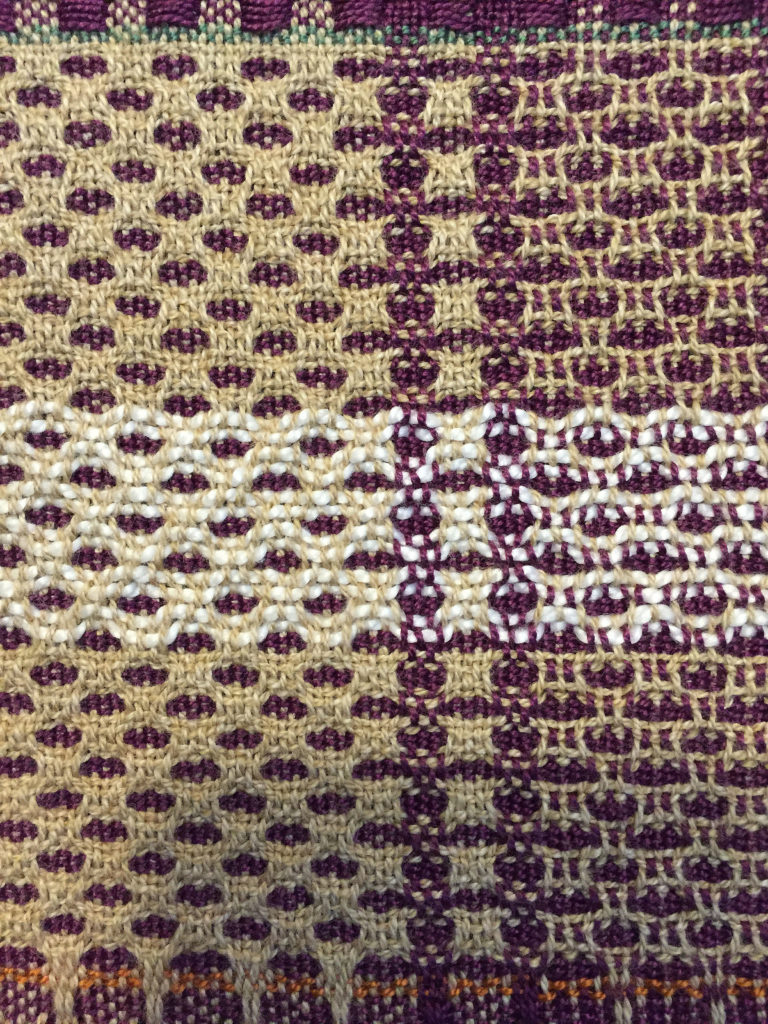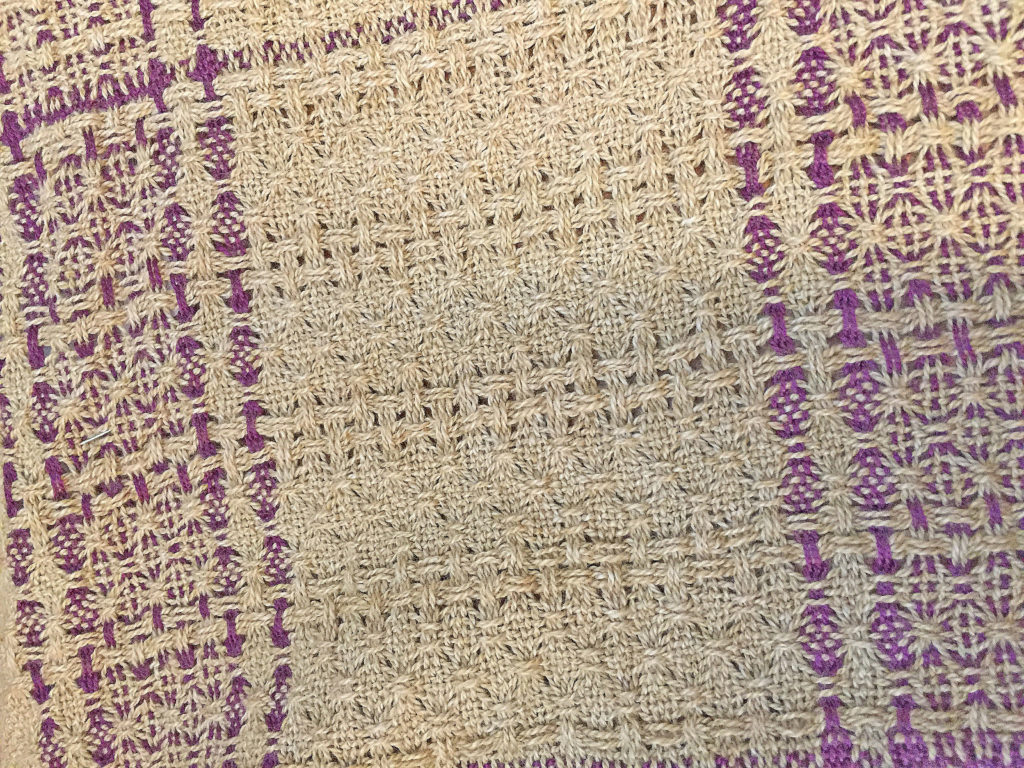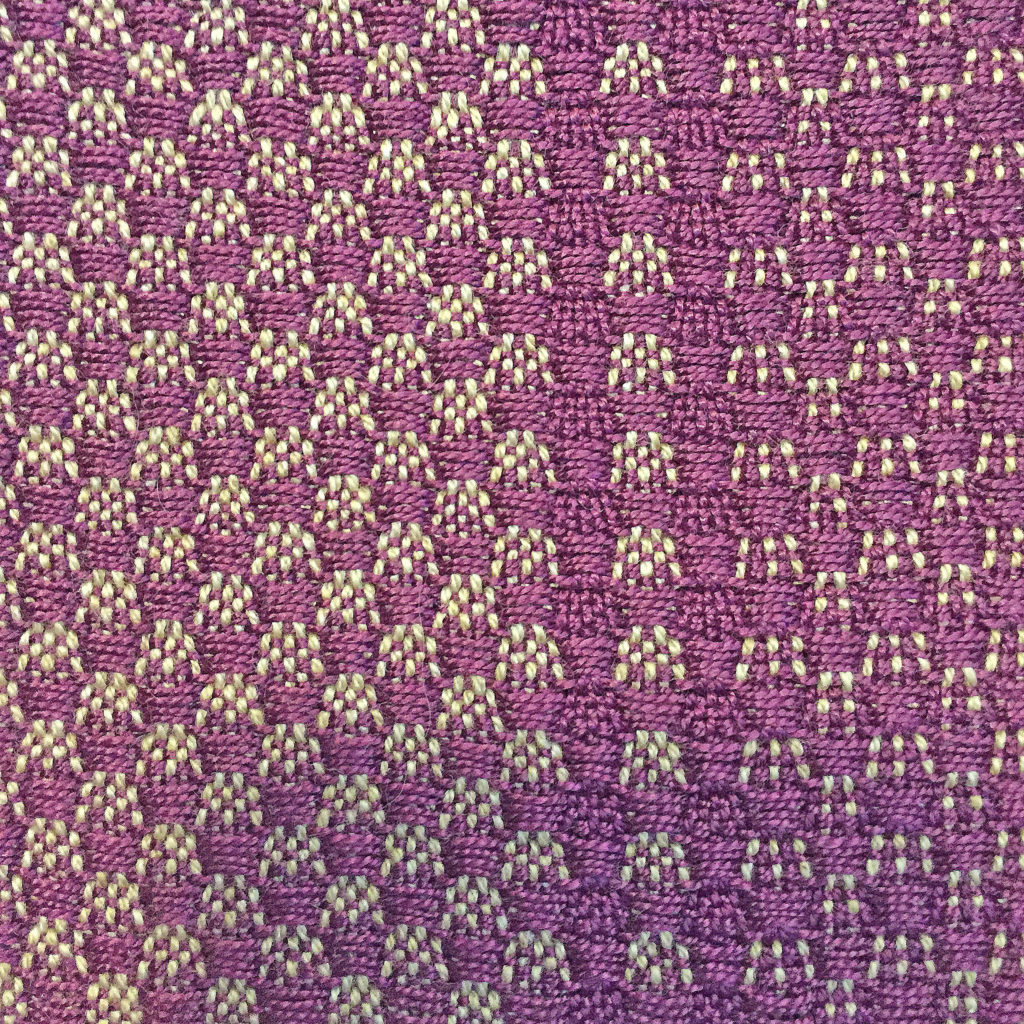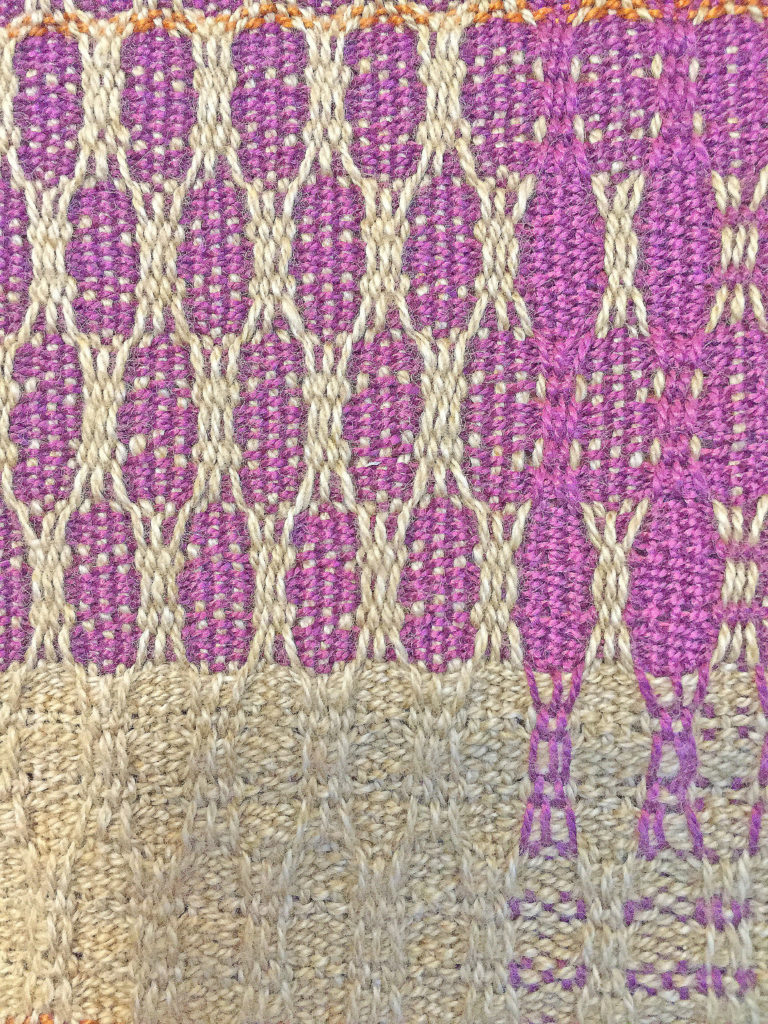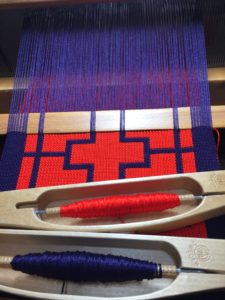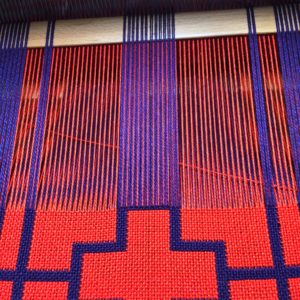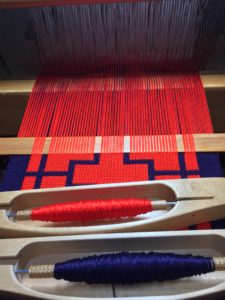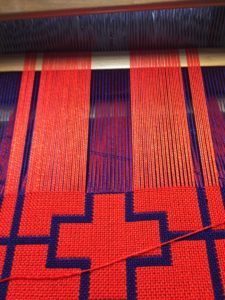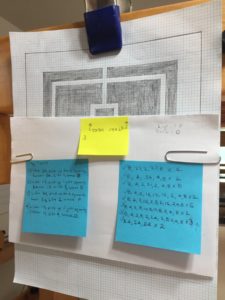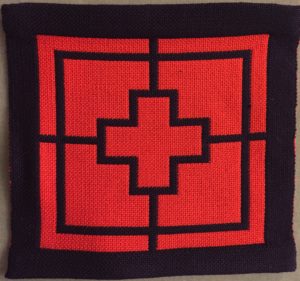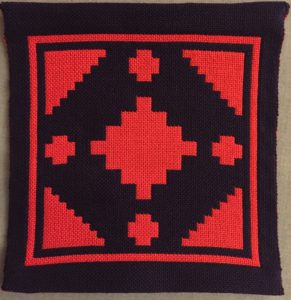In July I’ll teach at Convergence 2022, a weaving and fiber arts conference that usually happens every two years. In 2020, the pandemic prevented our meeting so this year it will be four years since our last gathering. One of the classes I’ll teach is on a weave structure called “overshot-patterned double weave.”
Overshot is a weave structure, or group of patterns, beloved by weavers and textile enthusiasts for years. Ancient weavers used overshot to weave circle and curve patterns into lovely coverlets. I’ve woven lots of table runners using overshot, including the one shown below.
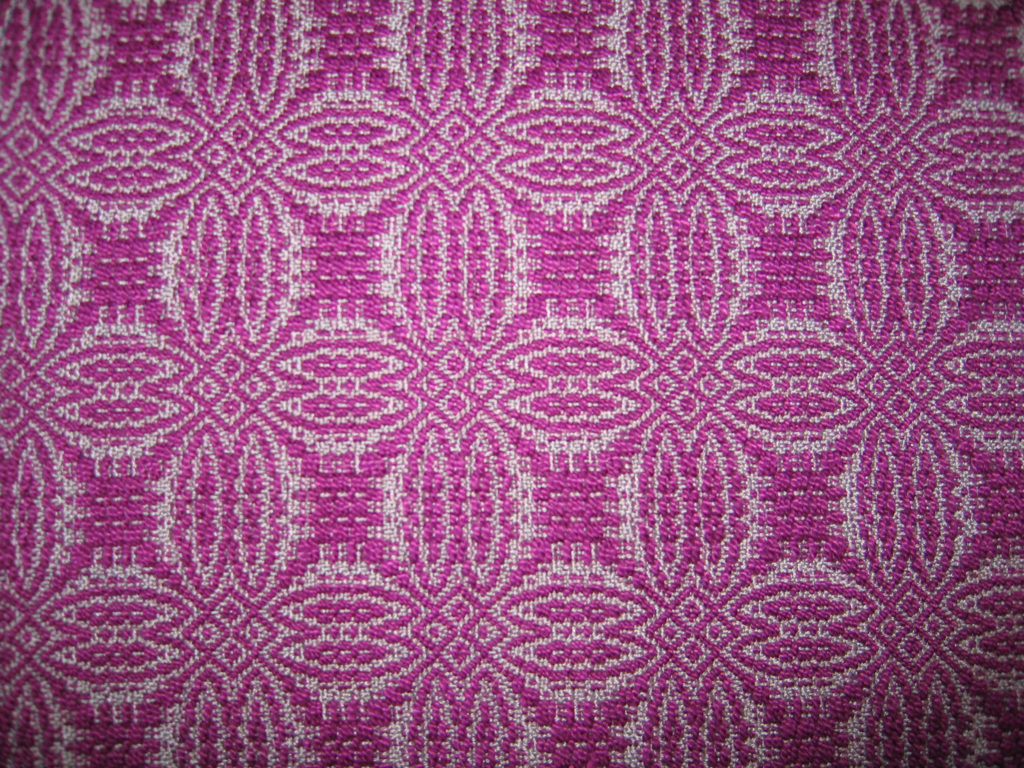
In overshot-patterned double weave, weavers take the pattern shorthand we use to weave overshot and adapt it to what is called double weave. In double weave there are two layers of cloth woven simultaneously, one under the other. In patterned double weave, the two layers contrast with each other, often in color, and the layers exchange. The structure is different, but the circles and curves that overshot produces still appear in the cloth. Below is a photo of fabric woven by adapting the Mary Ann Ostrander overshot pattern to patterned double weave.
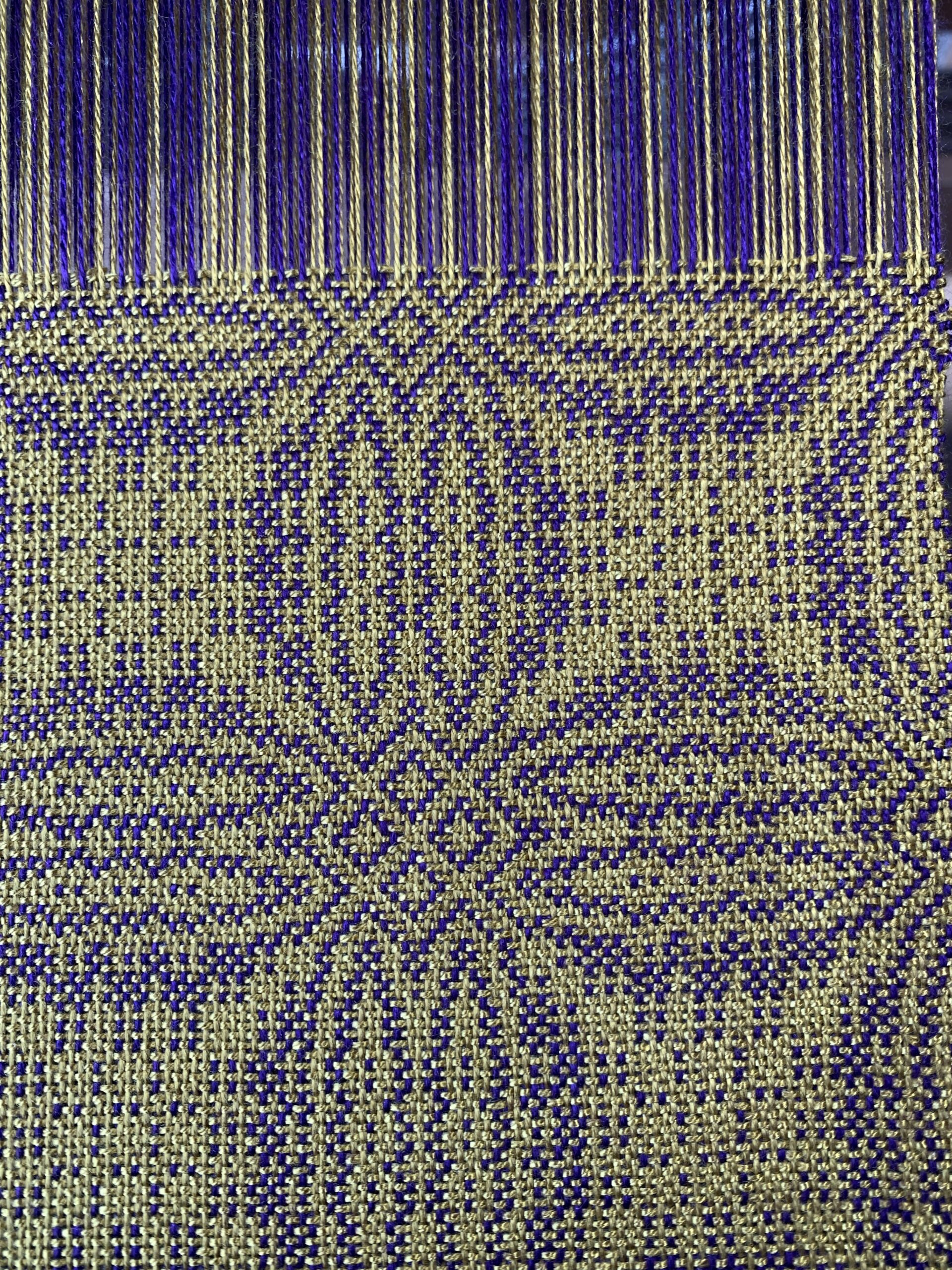
Students in the class will be able to choose from three different patterns. The patterns are Mary Ann Ostrander; Je Länger, Je Lieber; and Blooming Leaf and you can see them below. You may notice that the back of each piece is the negative of the front. The top two samples were woven in purple and gold tencel thread. The bottom was woven in blue and aqua cotton thread.
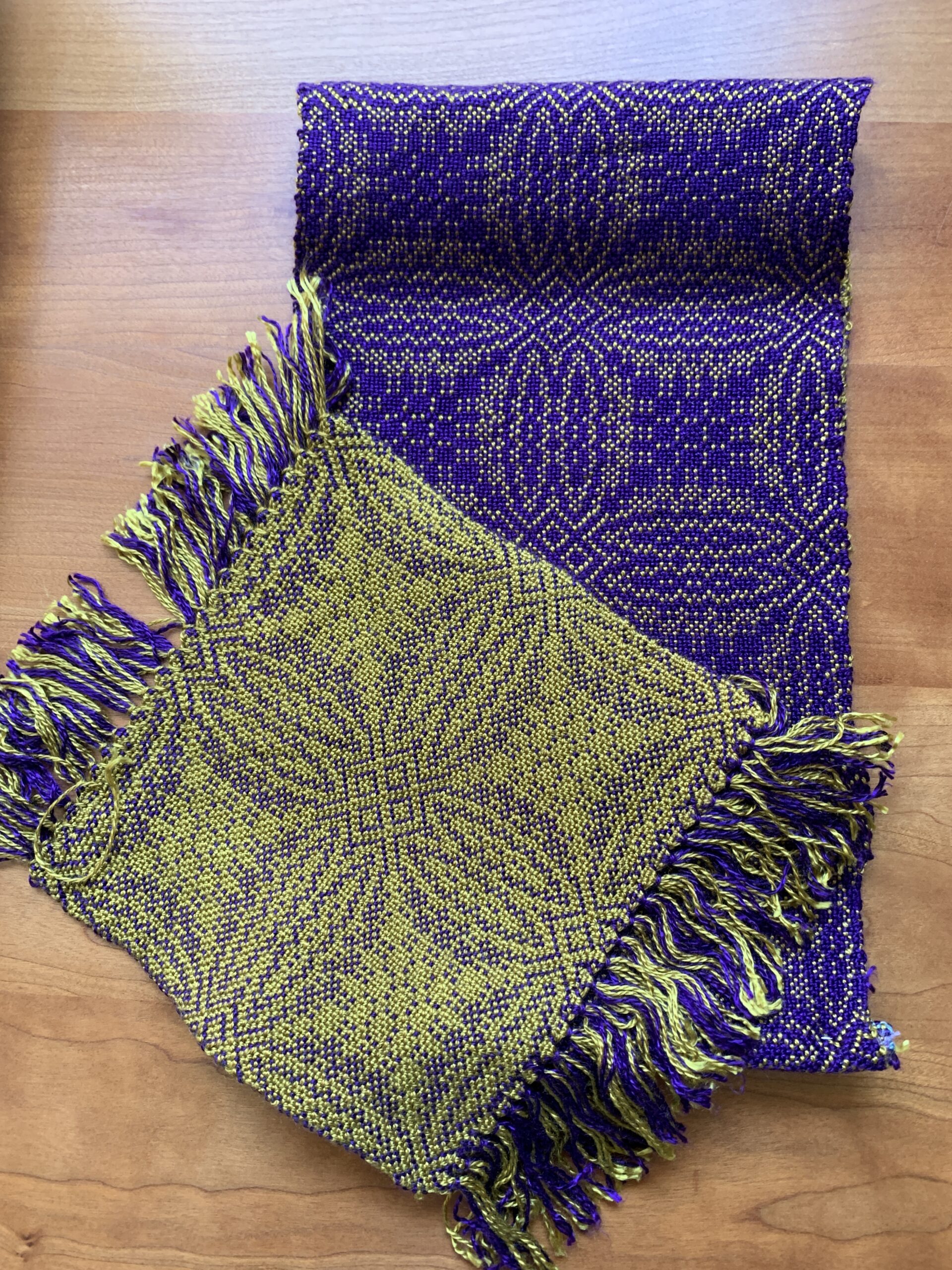
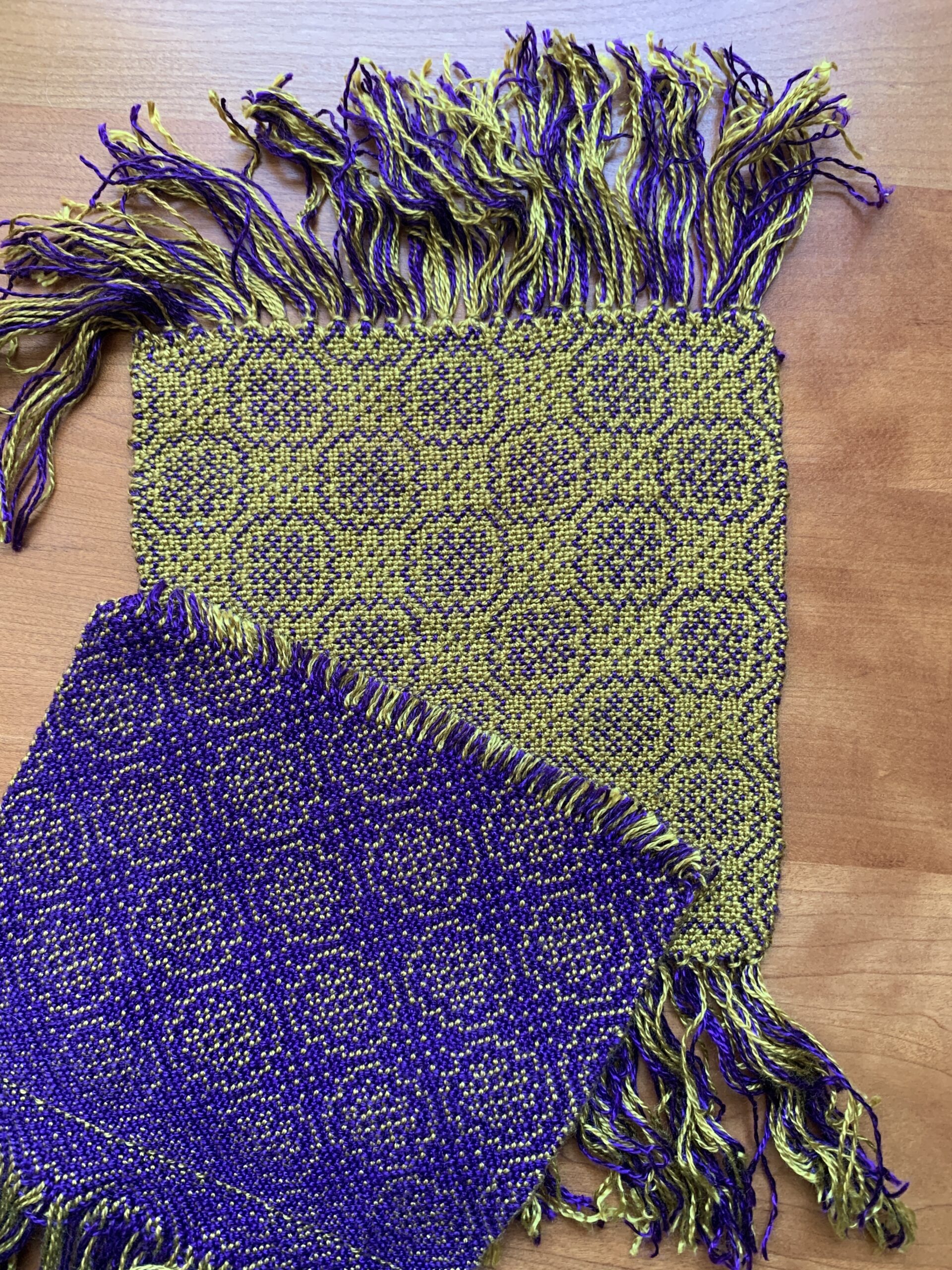
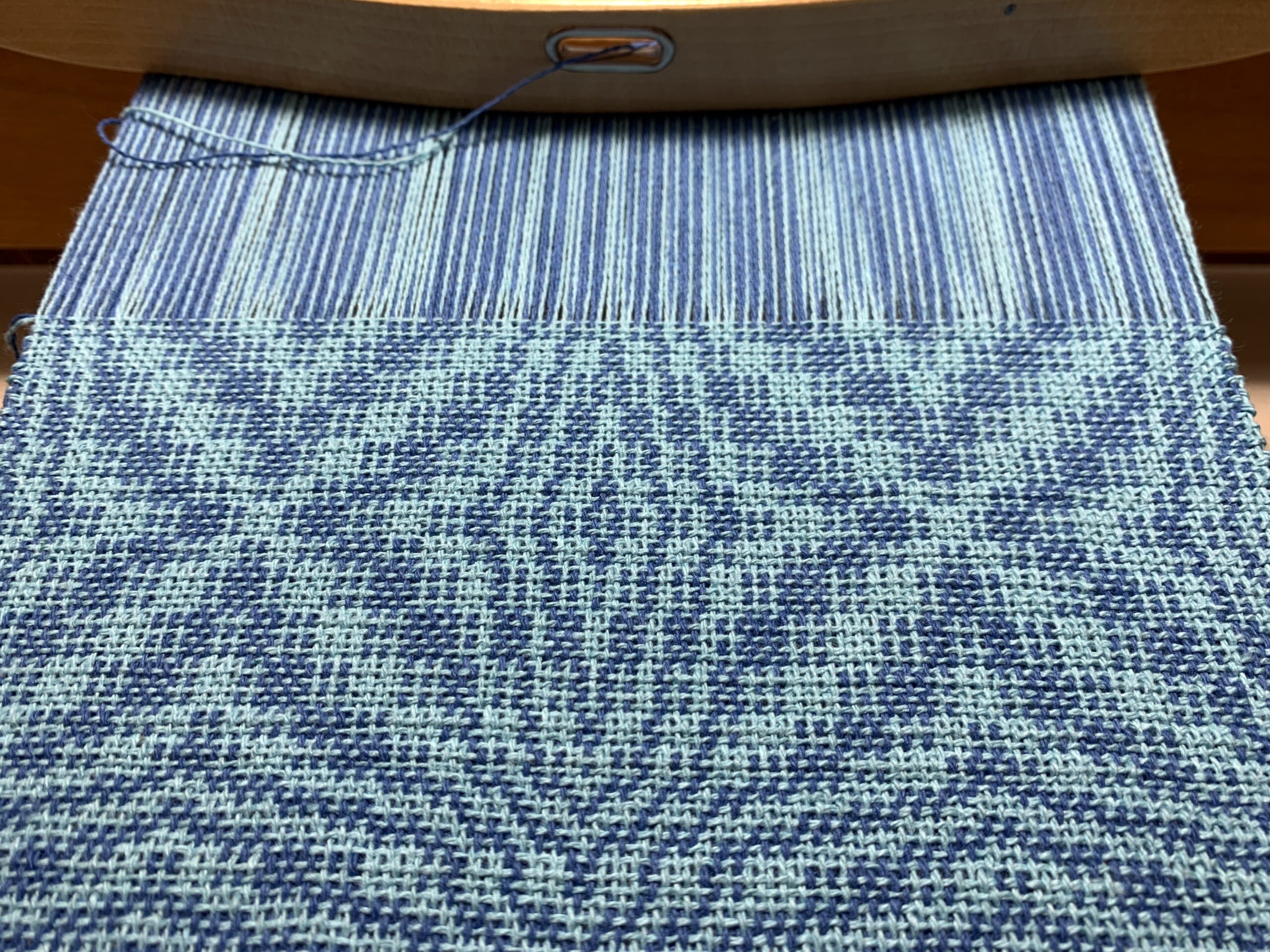
I have had fun designing and weaving overshot patterns converted into double weave patterns. I think the students in class will enjoy it, too.

